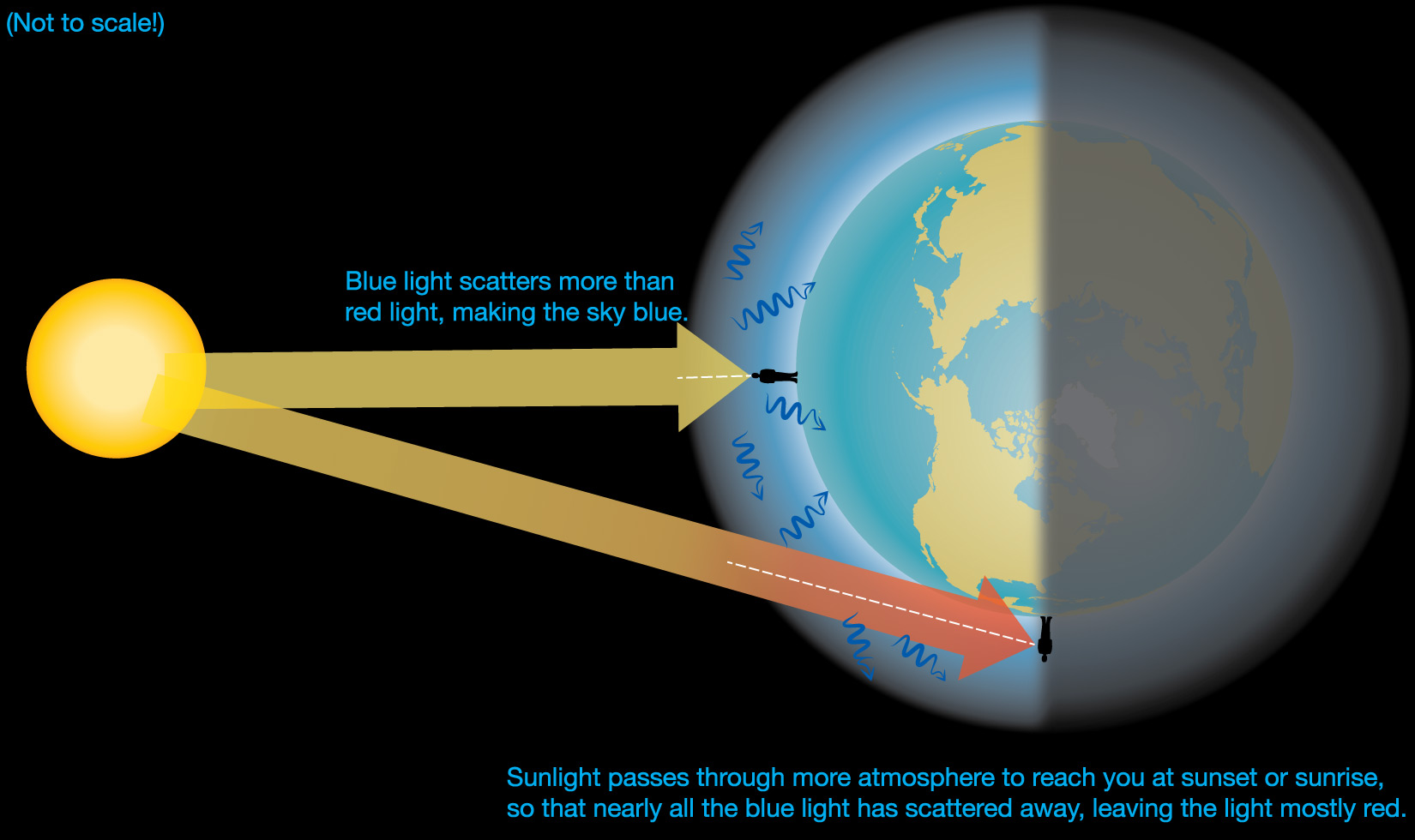Why is the sky blue?
If you ask around, you’ll find that most people are mystified as to why the sky is blue. The correct answer is a bit subtle, but you can understand it as follows.
Let’s start with a different question: Why does daylight come in through windows? The answer is not as obvious as it might seem, because daylight is coming from the Sun, and it will be light inside a room with windows even if the Sun is not shining directly in. In other words, visible light from the Sun must somehow be “bouncing” into the room from the outside air.
More technically, we say that air molecules can scatter visible light. This scattering bounces the visible light in all directions, which explains not only how daylight enters through windows but, more generally, why shadows are not pitch black. (On the Moon, where there is no air, shadows are pitch black.)
The fact that air can scatter visible sunlight means that although most visible sunlight passes through the atmosphere to the surface, a small fraction of it is scattered about the sky. Moreover, it turns out that the amount of light scattered depends on its wavelength: shorter wavelength visible light, which is blue, scatters more than longer wavelength visible light, which is red. Figure 1 shows how this fact explains both why the sky is blue and why sunrises and sunsets are red:
- Because blue light is scattered the most (of the visible colors), it spreads more widely across the sky, making the sky blue.
- At sunrise or sunset, you are looking through much more atmosphere than at midday. This means that much more of the blue light has been scattered away before it can reach you, so that the sunlight that comes through is mostly red.
